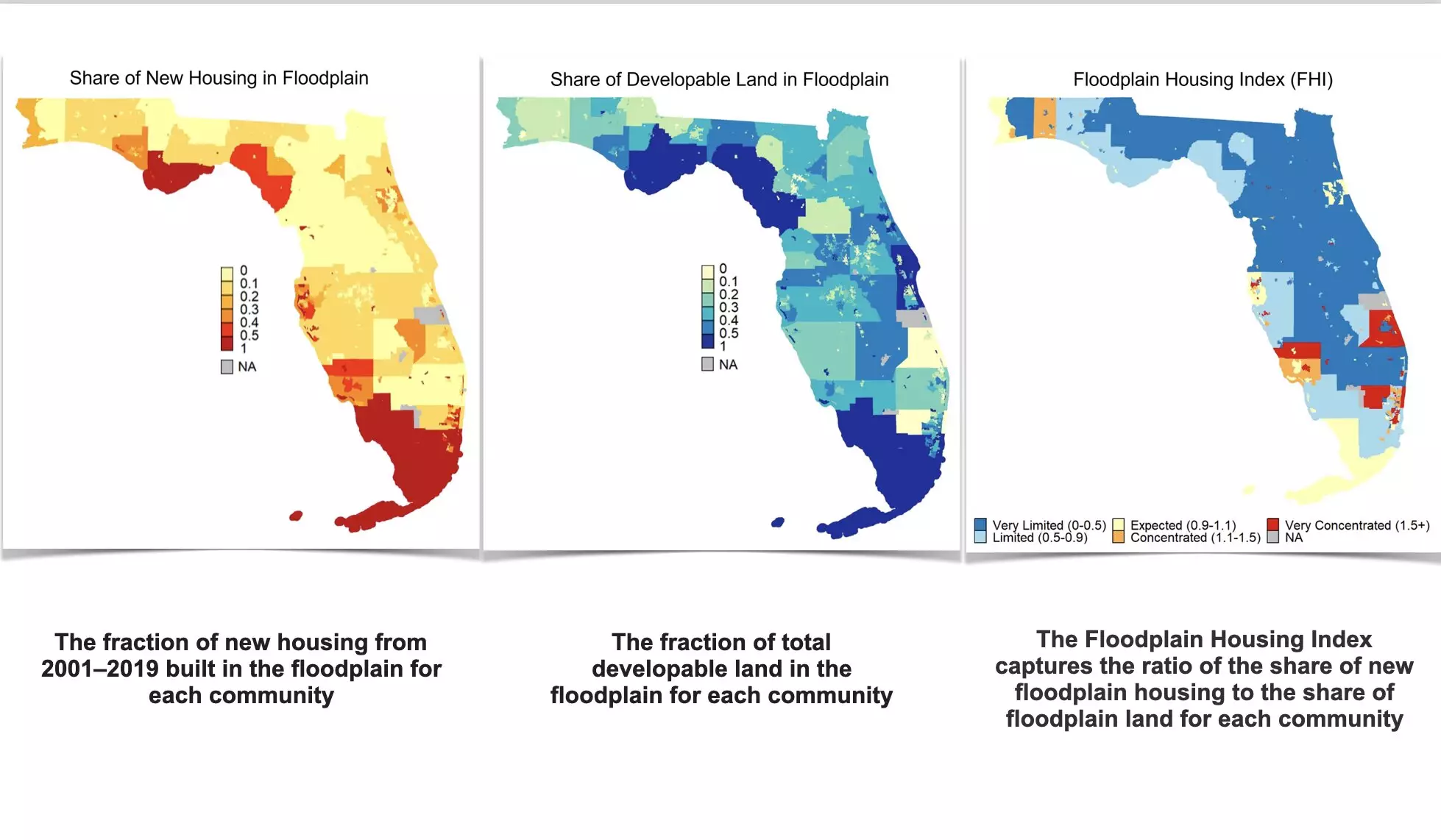In recent years, the phenomenon of floodplain development has grown increasingly concerning, highlighting a tension between growth and environmental risk. A comprehensive analysis conducted by scientists at the University of Miami’s Rosenstiel School has uncovered compelling data regarding the extent of this developmental surge across the United States. With over two million acres of floodplain developed in the last twenty years, the implications for communities—particularly in flood-prone regions like the Southeastern U.S.—are profound. This development poses an array of risks that may exacerbate flooding incidents and deepen the societal challenges surrounding natural disasters.
Key Findings from the Study
The research revealed that Florida has emerged as a significant hotspot for floodplain housing, with approximately 398,000 new residential properties constructed in flood-prone areas, accounting for 21% of the state’s new housing developments. Researchers utilized a mix of geospatial land use data, impervious surface analysis, housing data, and digitized floodplain maps to paint an accurate picture of recent trends in floodplain debilitation. What stands out in their findings is the discrepancy between the current development rates and what might have been expected based on the distribution of floodplain land. The statistic indicating that less than 40% of newly built homes are located in flood-prone areas might seem counterintuitive, sparking questions about regulatory frameworks and urban planning practices that influence these outcomes.
The study highlights an intriguing trend: while a significant portion of communities maintains strict regulations limiting floodplain construction—74% have restrictions on new developments—many still experience growth in these vulnerable areas. The findings suggest that coastal communities are more prone to housing developments within floodplains compared to their inland counterparts. This observation raises alarms about the effectiveness of regulatory practices. Communities may restrict development, yet when housing demands are high, there often exists a push to override these measures. The researchers emphasized that to mitigate future flooding risks effectively, participating communities need to enhance their floodplain management practices alongside their regulatory efforts.
Participation in FEMA’s Community Rating System (CRS) brings an additional layer to the conversation about floodplain management. This voluntary program aims to incentivize communities to improve their floodplain management and provides discounts on flood insurance premiums. However, the study underscored that joining the program alone does not ensure safer development practices; rather, it necessitates active engagement and improvement in floodplain management to witness tangible benefits. This revelation points to a broader trend where communities facing flood threats undertake measures to enhance their management approaches but may lack motivation or resources for substantial changes.
Learning from Responsible Communities
Interestingly, the data suggests that numerous communities have responsibly navigated the pressures of development by strategically avoiding construction in floodplain areas. The authors of the study express optimism regarding these early successful actions, which might serve as a roadmap for other jurisdictions. Many of these responsible communities operate without attracting significant attention, yet they offer valuable lessons on how proactive measures can prevent future flood-related problems. Addressing the challenges encountered by communities facing significant flooding events can serve as a vital learning tool for municipalities seeking to bolster their risk management strategies.
The findings of this study are a clarion call for communities nationwide, urging governments and urban planners to reevaluate their approaches to floodplain development. As climate change progresses and extreme weather intensifies, the risks associated with housing in flood-prone areas will only escalate. Comprehensive assessments such as this one can guide strategic decision-making, promoting policies that prioritize sustainable development while safeguarding communities from flooding threats. The balance between necessary growth and environmental conservation will be pivotal in shaping resilient communities capable of facing the challenges posed by our changing climate.

